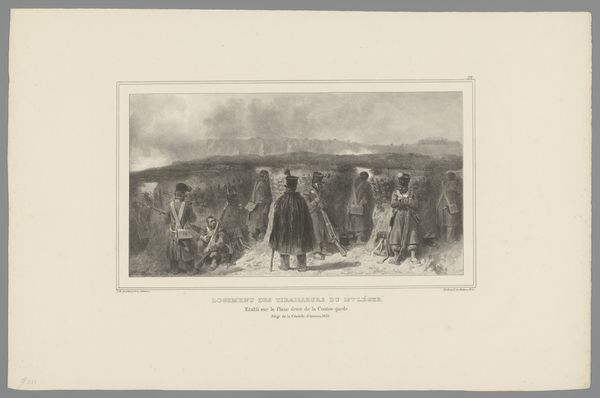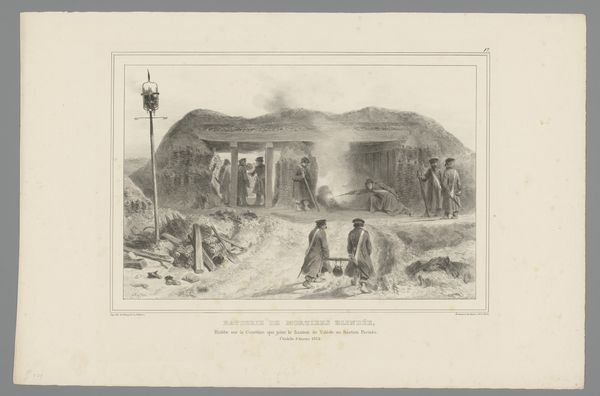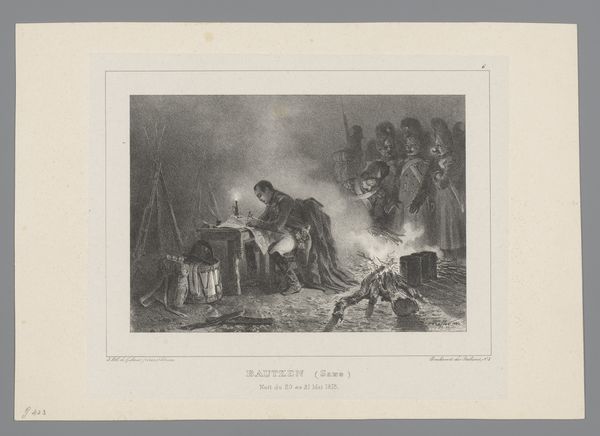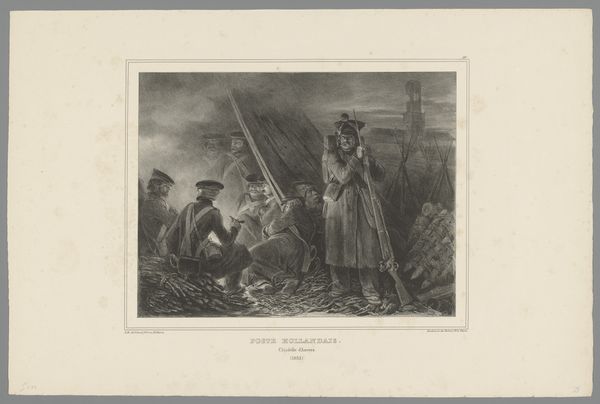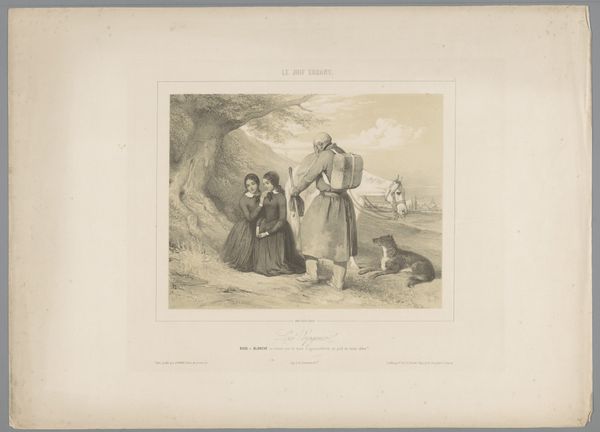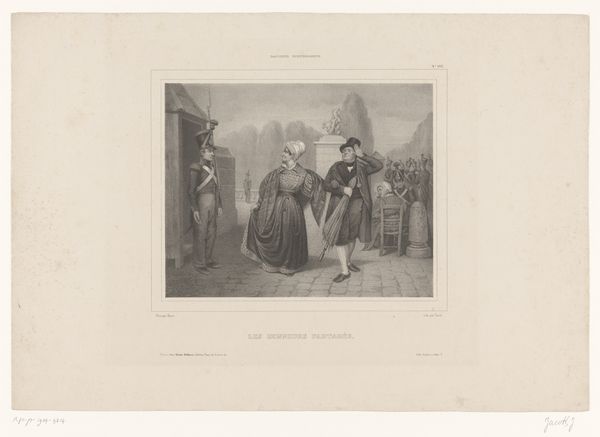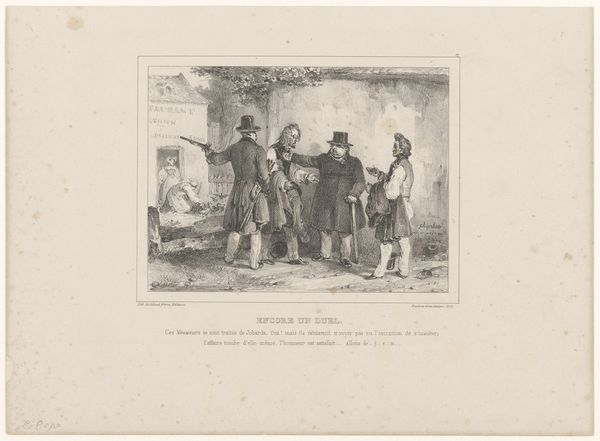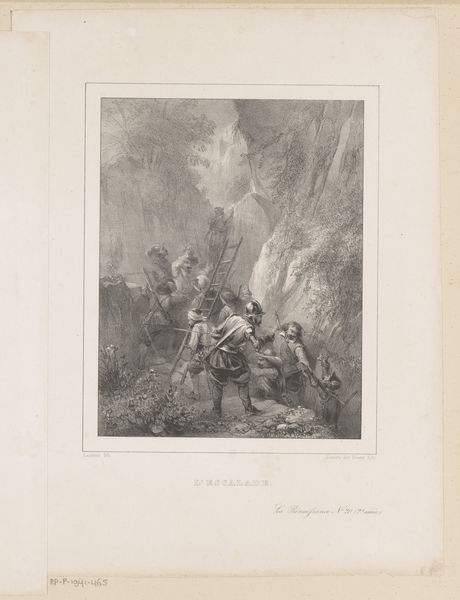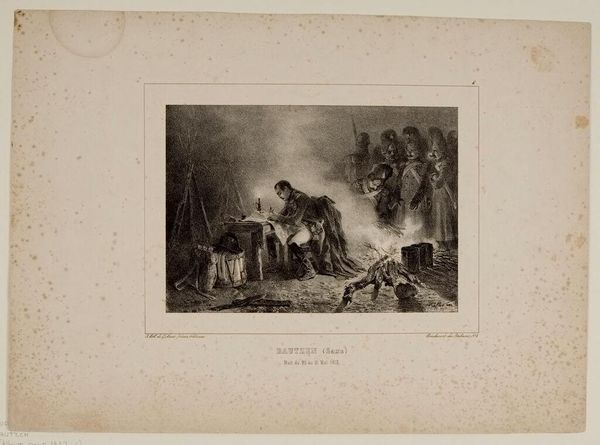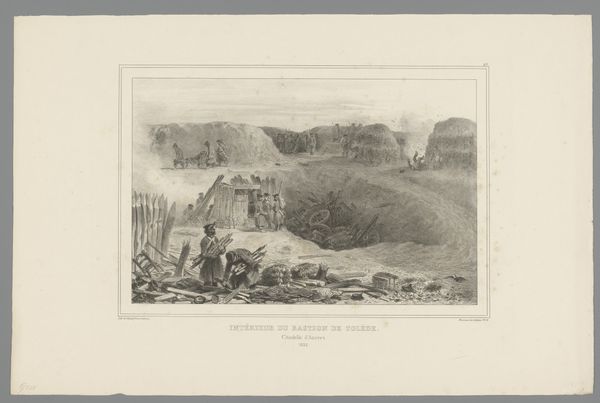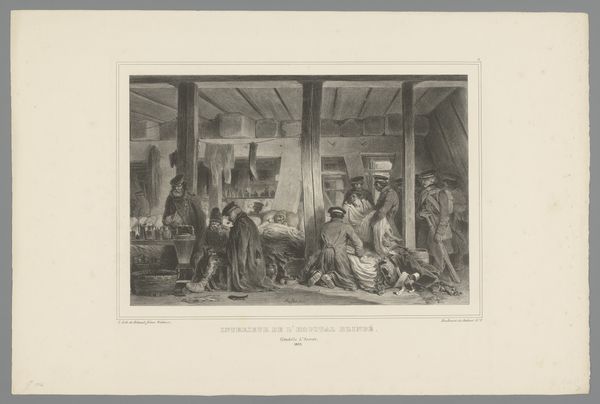
drawing, print, paper, ink
#
drawing
# print
#
paper
#
ink
#
romanticism
#
genre-painting
#
history-painting
Dimensions: height 363 mm, width 550 mm
Copyright: Rijks Museum: Open Domain
Auguste Raffet made this lithograph, "Soldiers at a Mine Entrance," in 1832. Lithography is a printmaking process using a flat stone or metal plate. The artist draws an image with a greasy substance, applies ink, and then transfers the image to paper. Here, the dense hatching and cross-hatching creates a sense of depth and texture, conveying the rough, uneven quality of the earthen mine entrance, and the soldiers' uniforms. Lithography allowed for relatively quick and cheap reproduction, making images like this accessible to a wider audience. The subject matter, soldiers at work, suggests themes of labor and the military-industrial complex. The mine entrance, a dark void, hints at the dangerous and unseen work happening within, as well as wider social issues of labor, politics, and consumption. Considering the materials and processes used in its creation, we can appreciate how this lithograph reflects the changing landscape of art production in the 19th century, challenging the traditional distinctions between fine art and craft.
Comments
No comments
Be the first to comment and join the conversation on the ultimate creative platform.

